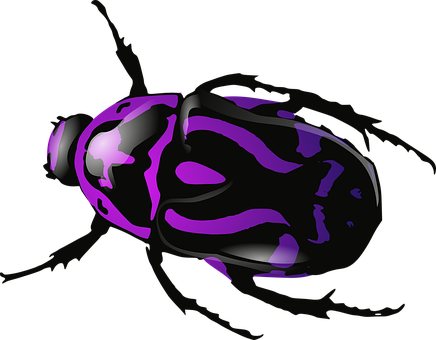The amazing creations of nature are animals. Each animal has a unique behavior and comes in many colors. The Animal kingdom is home to millions of mysterious and majestic animals species. Here’s a list of all purple animals found in nature.
1.Purple Emperor Butterflies
Purple Emperor Butterflies are one of the most beautiful purple creatures that live in central-southern England. They love to eat aphid honeydew, tree sap and other insects. Male species occasionally descend to the ground in search of salts from roads or animal dung. The species’ population has been declining steadily since the 20th century. It is now visible in southern England. The white-ringed eyespots under the forewing of the female species are similar to those found in the White Admiral. It is a member of the Nymphalid family and has a wingspan between 75-84mm. The lengths vary from one species to another.
The Purple Emperor Butterfly, also known as Apatura Iris, is a Palearctic species of butterfly that belonged to Nymphalidae. The wingspan of males is 70-80 millimetres (2.8-3 in). They have purple-blue sheen due to iridescence. The caterpillar larvae are green with yellow and white markings. It has two large “horns” at its anterior end and one smaller at the posterior.
2.Purple Beetles

Purple Beetles, active predators, are known to come out at night to hunt slugs as well as other invertebrates in meadows, woodlands, and gardens. It can grow to 3cm in length and is visible from March through October each year. Gardeners will benefit from the nocturnal predators, which are responsible for catching smaller invertebrates. The species’ appearance is described as having a black color with metallic-purple sheen. This sheen is found around the edges of the fused wing cases (elytra). It is also known by its name, the rain beetle. It can be found in Japan and Europe.
3.Purple Sea Snail
Purple Sea Snail, also known as Purple Ocean Snail, has a delicate shell measuring 3.5 cms (1.14 inches) in diameter. It is light purple on the top and dark purple down below. The species loves to feed on Portuguese-man-of-war jellyfish, Blue Ocean Slugs and Velella. This species is closely related to the Pallid Janthina (Janthina Pallida), which is rare in Bermuda. They are typically about the same size as a penny, but can grow to twice that size. The shells are purple on top and lavender below.
4.Orchid Dottyback
The beautiful purple Orchid Dottyback, also known as Fridman’s Dottyback and Fridman’s Pseudochromis, is most commonly seen in the Red Sea. They are found in colonies on ledges, where they feed on passing zooplankton. It looks similar to the Magenta Dottyback, but the Orchid Dottyback is more solitary. The Magenta does not have a black stripe in the eye. It can grow to 3 inches (8 cm) in length and can live for 5 – 7 year, but it is possible to live longer. The species is available in captivity for free and can be used as an aquarium pet.
5.Purple Frog

The family Sooglossidae is home to the purple frog, scientifically called Nasikabatrachus Sahyadrensis. It can be found in India’s Western Ghats. It is also known by the Indian purple or pignose Frog, and was officially described in October 2003. S.D. collected the first specimen in Kerala’s Idukki district. S.D. collected the first specimen in the Idukki district of Kerala. It was taken by Biju, from the Tropical Botanic Garden and Research Institute, Palode, India, and Franky Bssuyt, from the Vrije Universiteit Brussel, in 2003. The species live underground and only emerge for a few days to breed. One of the most color-changing animals in the world is the Pacific tree frog.
6.Purple Eastern Indigo Snake
Purple Snakes, scientifically called Amblyodipsas, are a genus that is found in Africa. The species is also known by the names purple-glossed or glossy snakes. All species are considered to be harmless. It is difficult to distinguish the venom from the shiny snakes of the genus Arizona in North America because it has not been studied thoroughly. The snake species has five teeth and is short. It gradually grows in size after interspace. The snake’s body is cylindrical, and the scales are smooth with no pits.
The Eastern indigo snake, a non-venomous snake of the Colubridae family, is considered to be non-venomous. This snake is the longest native snake to North America, and is also one of the most purple animals.
7.Purple Martin
The largest swalloPurple Starling bird in North America is the purple martin. It is characterized by its beautiful blackish-blue feathers, and a dazzling sheen that results from the incident light. Its breeding range includes central Alberta, the eastern United States, and subspecies found in Arizona, New Mexico, and Baja California. The Yucatan Peninsula and Cuba are the stops of the migratory bird’s passerines during their pre-breeding migration to North America, as well as during their post-breeding migration. The bird can grow to 7.5-7.9 inches (19-20 cm) in height and has a wingspan between 15.3-16.1 inches (39-41cm).
8.Ochre Sea Star
Pisaster Ochre sea stars, scientifically known by Pisasterochraceus, are also known as ochre starfish, ochre starfish, and purple sea star. It is one the most beautiful of the purple sea stars found in the Pacific ocean. The rays can reach a height of 10 to 25 cm (4 to 10 inches) and are directed around a central disc. Most species are purple, but some can be yellow, orange-ochre or reddish. It lives for four years, loves to eat chitons, limpets and snails, as well as barnacles and echinoids.
9.Purple Firefish
The purple firefish, scientifically called Nemateleotris Decora, is a species that lives in tropical waters of the Indo-West Pacific. It can be found from Mauritius, Samoa to Samoa to north to the Ryukyu islands and south to New Caledonia. It can grow up to 9 cm (3 inches) in length. It is usually seen in pairs, but can reach up to 9 cm (3 inches) in length. This species is one among the most beautiful purple animals. It has seven spines and 27-32 soft rays. The anal fin only has one spine and 28-31 soft rays. The head is purple, while the body is either whitish- or yellowish in color.
10.Purple Starling
The purple starling is also known by the name “purple glossy starling”. It is a member of the starling bird family and can be found in both open and cultivated areas. The metallic purple-colored wings and head can reach up to 22-23 cm in length. The species has a short tail and a yellow-colored eye.
11.Insulamon Palawanense
Insulamon Palawan Purple crab, also known as Insulamon Palawan, is a freshwater crab species that is native to the Philippines. This species was first described in 2012. The species can grow to 2.5-5.3 cm (1.0-2.1 inches) in width and is a striking purple color. Hendrik Freitag, from the Senckenberg Museum of Zoology Dresden, Germany, first described it.
12.Purple Honeycreeper
The purple honeycreeper, scientifically called Cyanerpes cueruleus, is a small bird that belonged to the Thraupidae family. This species can be found in the tropical New World, from Colombia and Venezuela to Brazil and Trinidad. Carl Linnaeus, a Swedish naturalist, described one of these beautiful purple animals in 1758 under the binomial Certhia carrulea in his tenth edition Systema Naturae. The bird species measures 4.5 inches (11.5 cm) in length and weighs 0.42 Oz (12 grams). It has a long, black-decurved bill. The male species is a purple color with bright yellow legs and black wings, tail, belly and belly.
13.Janthina Janthina
Janthina Janthina, also known as the common violet snail or violet sea-snail, is a common name. This species is a holoplanktonic marine gastropod mollusc, which belongs to the family Epitoniidae. It can be found in all oceans and prefers warm water of temperate and tropical seas. It can be found in the subtropical Atlantic, Indian, and Pacific oceans.







